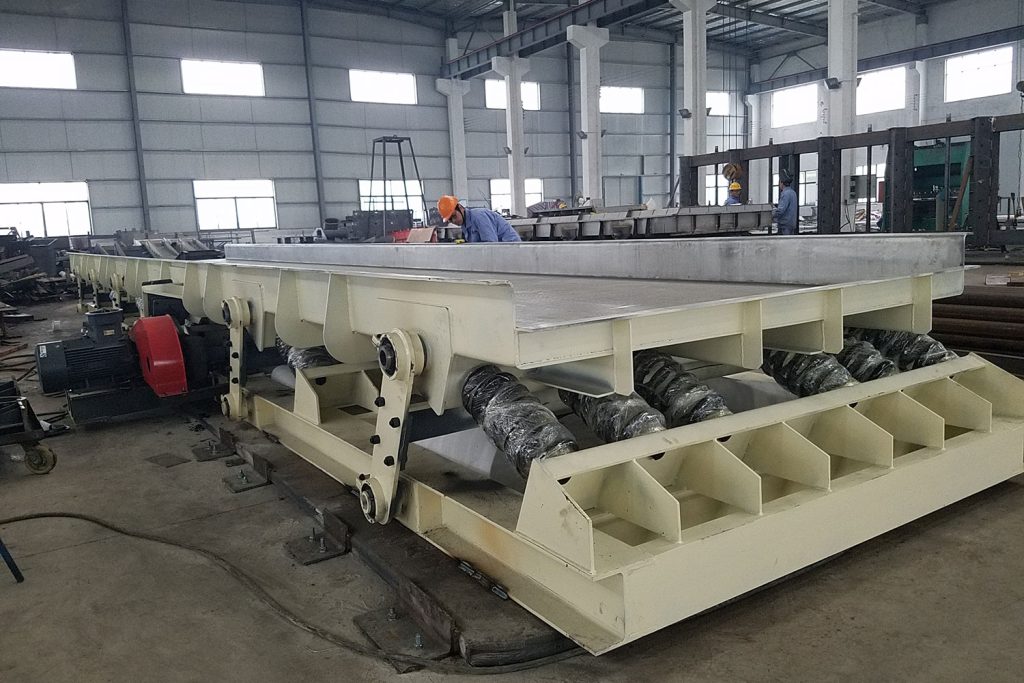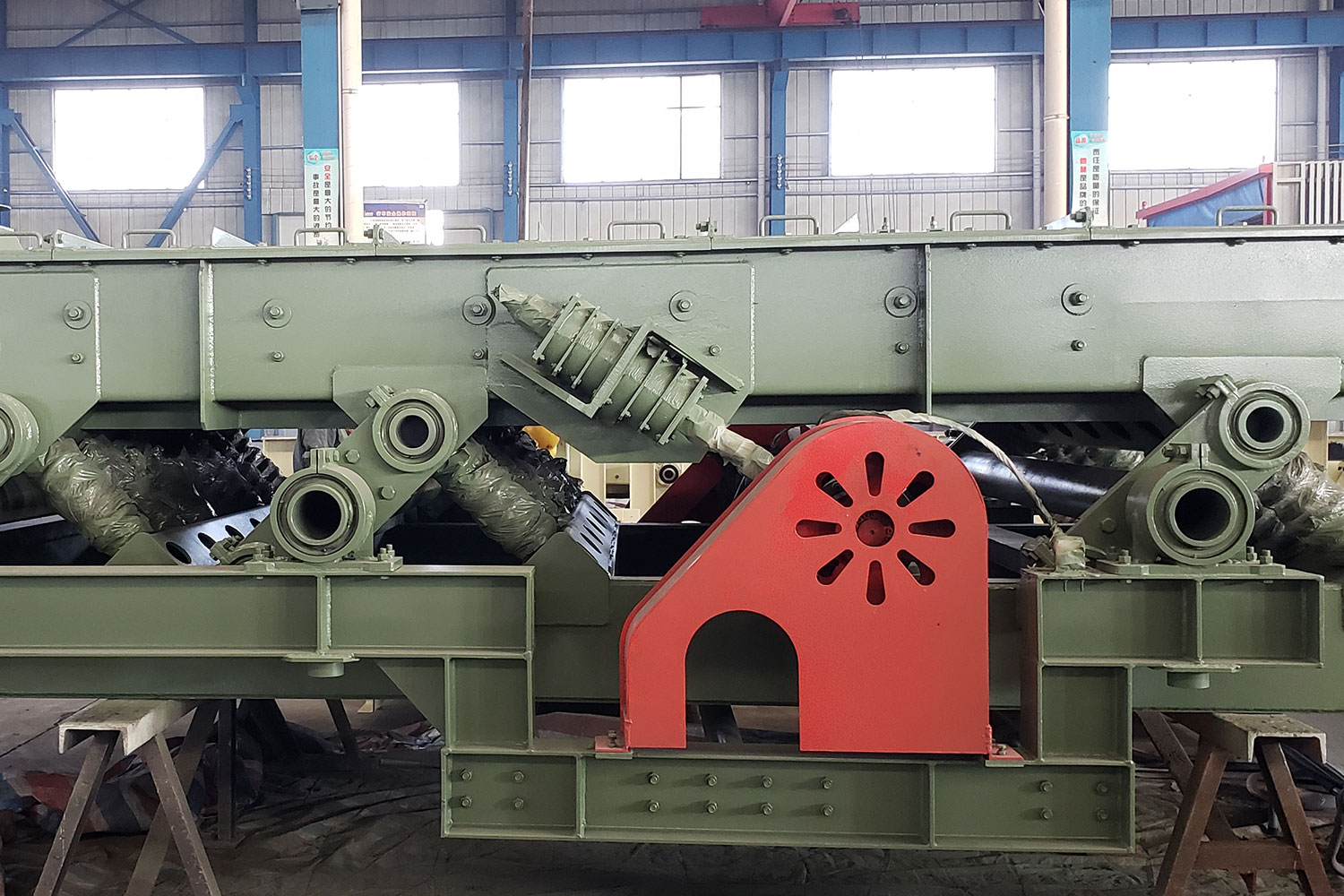
A vibrating conveyor is a device that continuously conveys materials by means of vibration. It can be used for horizontal, gently inclined, or vertical transportation (rising along the spiral groove) of various loose materials. Screening, drying, dehydration, cooling, mixing, and other processes can be completed at the same time during the conveying process. For materials with a lot of dust and harmful components, it can also be transported by a sealed tank. It has a simple structure and low power consumption and has been widely used in mines.
A vibrating conveyor is mainly composed of a vibration exciter, a bearing groove, the main vibration spring, and a frame.
Trough and Balance Chassis
The conveying trough (carrier, trough) and the balanced chassis (chassis) are the two main components in the vibrating conveyor system. The tank body transports materials, and the bottom frame mainly balances the inertial force of the tank body and reduces the dynamic load transmitted to the foundation.
Shaker
The vibration exciter is the power source of the vibrating conveyor and the exciting force that produces periodic changes, which makes the conveying trough and the balanced chassis generate continuous vibration. It can be divided into mechanical, electromagnetic, hydraulic, and pneumatic types. The magnitude of its exciting force directly affects the amplitude of the conveying trough.
Main vibration spring and vibration isolation spring
The main vibration spring and the vibration isolation spring are the elastic elements in the vibrating conveyor system. The function of the main vibration spring: the main vibration spring supports the conveying trough, which is usually installed obliquely, and the inclined angle is ß (vibration angle). , making effective use of vibration energy. The role of the vibration isolation spring: support, and can reduce the dynamic load transmitted to the foundation or structural frame.
Guide rod
The function of the guide rod is to make the groove body and the chassis vibrate relative to the center line perpendicular to the guide rod, and it is connected with the groove body and the chassis through a rubber hinge.
Feeding and unloading devices
The feeding device and the discharging device are used to control the material flow and are usually softly connected to the tank body.
